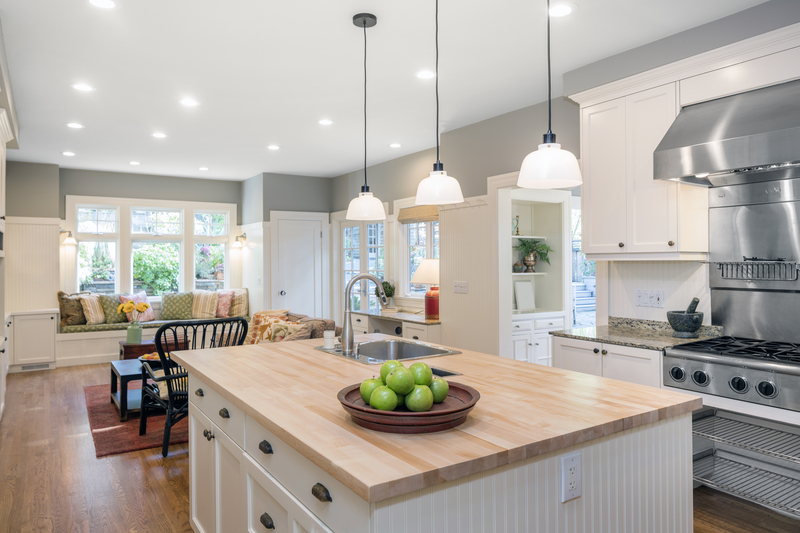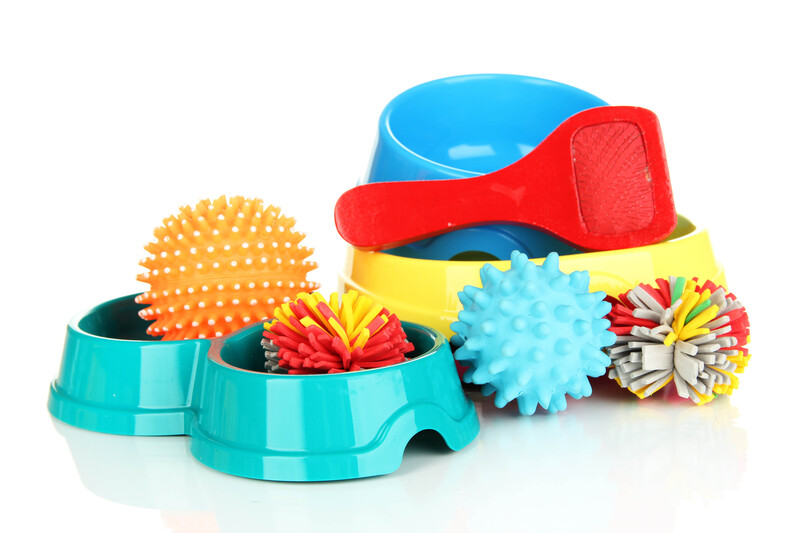Professional Touch: The Safe Way to Move Your Piano
Posted on 25/05/2025
Professional Touch: The Safe Way to Move Your Piano
Introduction: The Art of Moving a Piano Safely
Moving a piano is not just about shifting a piece of furniture from one location to another; it's about safeguarding an instrument that holds both financial and sentimental value. Whether it's a family heirloom or a centerpiece in your living room, pianos carry significant weight--literally and figuratively. The professional touch is essential to ensure your piano arrives unscathed in its new home, free from damage or tuning issues.
In this comprehensive guide, we'll give you an in-depth look into the safe way to move your piano, why hiring professionals is recommended, the common risks involved, and steps you should take to prepare your instrument for a stress-free move. We'll also cover tips for finding reliable piano movers, the importance of piano moving services, and how to maintain your piano post-relocation.

Why Pianos Require Special Handling
- Pianos are heavy yet delicate. Most upright pianos weigh between 300-500 lbs, while grand pianos can range from 600 to more than 1,200 lbs. Despite their heft, they contain thousands of delicate moving parts that are easily damaged by improper handling.
- They are awkwardly shaped. Their bulk and asymmetry make it tough to maneuver through tight spaces like hallways and doorways.
- Sensitive internal components. Pianos have finely-tuned actions, soundboards, and strings that can be disrupted by bumps, drops, or sudden temperature changes during a move.
- Risk to property and personal safety. Mishandling a piano can result in serious injury, property damage, or both!
Moving a piano the safe way requires specialized knowledge, carefully chosen equipment, and teamwork.
The Professional Solution: Why Hire Piano Movers?
Expertise and Experience
A smart homeowner knows that hiring professional piano movers ensures the instrument is handled with utmost care and expertise. Pros have encountered every kind of scenario, from spiraling staircases to narrow doorways. Their experience allows them to anticipate and solve moving challenges safely and efficiently.
Specialized Equipment
Piano moving professionals come equipped with the right tools for the job:
- Piano dollies and skid boards for safe transportation
- Heavy-duty straps and blankets for protection
- Stair climbing tools and ramps for multi-story moves
- Custom-fit moving trucks with climate control
Proper Insurance
Accidents can happen, regardless of preparation. Certified piano movers carry liability insurance, so if something goes wrong, you won't face costly repairs or replacement out of pocket.
Peace of Mind
Ultimately, trusting experts to execute the safe relocation of your piano means less physical and mental stress for you. You can rest easy knowing your beloved instrument is in capable hands.
Risks of Moving a Piano Without Professionals
- Physical injury: Pianos can shift unexpectedly, putting your back, fingers, and toes at risk.
- Damage to the piano: Scratched finishes, broken legs, misaligned keys, or cracked soundboards are common problems caused by amateur moves.
- Damage to property: Walls, floors, stairs, or doors can get scuffed, chipped, or cracked during an awkward move.
- Piano going out of tune: Improper handling and jarring can lead to expensive repairs and tuning.
Attempting to move a piano yourself is rarely worth the risk. The smallest miscalculation can turn a musical treasure into an expensive problem.
Steps Professionals Take to Ensure Safe Piano Moving
Initial Assessment
Professional piano movers always start with a thorough assessment. This includes:
- Measuring the piano and all doorways/hallways along the route
- Identifying stairs, slopes, or other obstacles
- Checking if the piano needs to be partially disassembled
Disassembly and Preparation
Depending on the type of piano, pros may remove legs, pedals, or lyres before moving. Everything is carefully wrapped in protective padding to prevent scratches or damage. The keyboard lid should always be secured.
Safe Lifting and Moving Techniques
Professional teams use coordinated lifting techniques to evenly distribute weight, keeping the piano stable and your home protected. They rely on specialized equipment to roll or carry the piano safely and securely to the truck.
Secure Transportation
Inside the truck, pianos are anchored with tie-downs and protected by blankets, minimizing the chance of shifting in transit. Many piano moving services offer climate-controlled vehicles to prevent damage from temperature or humidity swings.
Delivery, Unpacking, and Reassembly
Upon arrival, the team will skillfully maneuver your piano into its new location, reattach any removed parts, and ensure it is perfectly positioned. They'll check for any changes and offer advice on post-move care.
Types of Pianos and Their Moving Needs
Upright Pianos
These are the most common home pianos, easy to place against a wall. While generally simpler to move than grands, their weight and height present unique challenges. Professionals often stand the piano upright on a piano dolly and use lots of padding.
Grand and Baby Grand Pianos
Moving a grand piano often includes removing the legs and pedal lyre, wrapping the body, and securing it to a skid board. The instrument is then gently wheeled and loaded onto the truck by a trained team. This is a task only experienced crews should attempt.
Console, Spinet, and Digital Pianos
Smaller console or spinet pianos, and digital pianos, are easier to manage but still should be handled with care to avoid damage to keys, cabinet, or internal electronics.
How to Choose Reliable Piano Movers
What to Look For
When it comes to hiring piano moving experts, do your research. Here are some essential criteria:
- Specialization: Does the moving company have dedicated experience in piano moving?
- Licensing and insurance: Are they properly insured and licensed for your state or area?
- Reputation: Check for glowing testimonials and high ratings online.
- Transparent pricing: Avoid companies with hidden fees or vague quotes.
- Professional staff: Movers should be uniformed, punctual, and equipped with the right gear.
Questions to Ask
- How long have you been moving pianos?
- Can you provide references?
- What equipment and trucks do you use?
- Is your team trained in moving all types of pianos?
- What does your insurance policy cover?
Getting a Quote
Request an on-site appraisal or send detailed photos. Be wary of "ballpark" phone quotes, as these often don't account for the challenges of your particular move.
Cost of Moving a Piano: Factors to Consider
Common Factors That Affect the Price
- Type and size of piano (upright, baby grand, grand, etc.)
- Moving distance (local, state-to-state, international)
- Staircases or tight turns in either location
- Disassembly/reassembly needs
- Number of movers required
- Insurance and any special requests
Typical Price Range
Local moves often cost between $250 and $800, while long-distance or highly complex moves may cost $1,000 or more. Although the expense might seem significant, professional piano moving can save you potentially thousands in repairs or replacements.
Preparing Your Piano for the Move
Even with professionals on the job, there are several steps you can take to ensure everything goes smoothly:
- Inform your movers of site conditions--stairs, small elevators, tight spaces, and any access issues.
- Clear the path between the piano and the exit. Remove rugs, decor, and boots or shoes.
- Secure your pets and children away from the moving area.
- Take photos of your piano for insurance before the move.
After the Move: Ensuring Continued Care
The Importance of Tuning
After any piano move, it's crucial to tune your piano. The vibrations and changes in temperature/humidity during transit can disrupt the instrument's pitch. Allow your piano to acclimate for 2-4 weeks in its new space before hiring a professional tuner.
Inspect for Damage
- Check all external surfaces for scratches, dents, or chips.
- Test all keys, pedals, and the music stand for functionality.
- Review the hardware and legs for tightness and stability.
Maintain Stable Conditions
Place your piano in a climate-controlled room, away from direct sunlight, heating vents, and drafts. Fluctuations in temperature or humidity can affect the soundboard and tuning stability.
Special Considerations: Moving a Piano Across Long Distances
Long-distance or international moves require even more professional expertise:
- Get detailed documentation for customs (if crossing borders).
- Request custom crating for ultra-safe shipping.
- Work only with movers who have experience with cross-country piano transport.

DIY: When Should You Consider Moving a Piano Yourself?
While we strongly recommend hiring experts for most moves, there are a few exceptions:
- Your piano is a small, lightweight digital variety
- No stairs, tight turns, or narrow hallways exist at either location
- You have a group of fit, experienced helpers and proper equipment
Conclusion: The Smart Choice for a Stress-Free Piano Move
Your piano is more than a piece of furniture--it's a musical treasure, a family legacy, and a significant investment. The safest way to move your piano is to entrust it to experienced, professional piano movers who bring the professional touch to every move.
By understanding the risks, benefits, and process of professional piano relocation, you're equipped to make an informed decision. Whenever you need to relocate your cherished instrument, remember: peace of mind and piano safety are worth the investment.
For a safe, expert, and stress-free move, choose professional piano moving services. With their experience, equipment, and dedication, your piano will continue to inspire and delight--no matter where you call home.



